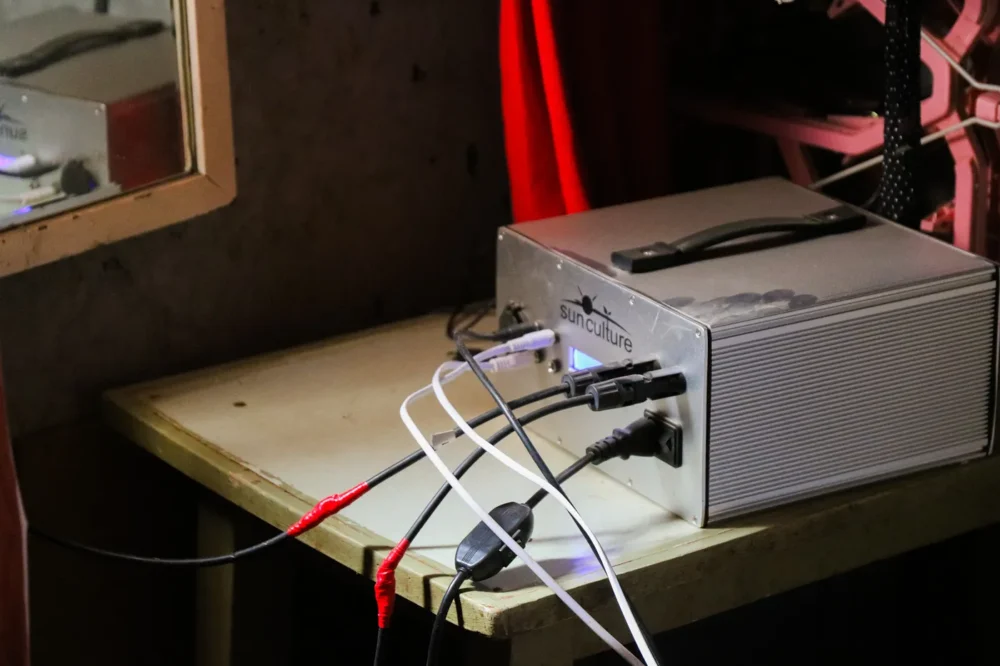High Tech R&D in the Heart of Kenya
Members of the Low Energy Inclusive Appliances (LEIA) Programme met with SunCulture’s team to discuss how they are making high quality, solar-powered irrigation affordable for the world’s 570 million smallholder farming families and also discuss how they have developed and refined their product over time

By Garick Lee, Senior Energy Access Consultant, Energy Saving Trust, Co-Secretariat of the Efficiency for Access Coalition
Straddling the equator in Kenya’s fertile Rift Valley, sits a town of 56,000 called Nanyuki. This small town, surrounded by farms, ranches and wildlife parks, is also the unlikely home to the R&D (research and development) lab of one of the fastest growing technology startups in Africa, SunCulture. Members of the Low Energy Inclusive Appliances (LEIA) Programme met with SunCulture’s Chief Technology Officer and Co-Founder, Charles Nichols, and Product Manager, Max Garnick, to discuss how they have developed and refined their product over time.
SunCulture was founded in Kenya in 2012 with a mission to make high quality, solar-powered irrigation affordable for the world’s 570 million smallholder farming families. In sub-Saharan Africa, they saw a particularly pressing need for affordable irrigation, with large tracts of farmland lacking reliable rainfall and smallholder farms producing on average 50% less output per acre than their global counterparts.
From their R&D lab in Nanyuki, Charles Nichols and his team, have worked tirelessly to bring down the cost of their solar-powered irrigation kit products and improve their technology.
In 2013, we started with a roughly $5000 product, which was clearly quite difficult in this market”, he explained. “We put quite a lot of years of R&D into designing the RainMaker version 1 (RainMaker1) in order to bring the cost down from that $5000 price to about a $500 cash price.
SunCulture released their RainMaker1 solar water pump product in December 2017, and with it announced their intention to genuinely disrupt the market. The RainMaker1 succeeded in doubling the yields of its customers and saving them many hours per week of physically moving water, and by financing 80% of its cost, SunCulture reduced the upfront price to farmers to just $89.
In addition to its affordability, the RainMaker1’s design was different to any other solar water pumps available on the market at the time. SunCulture integrated a lead-acid battery pack into their product that allowed the customer to run their pump whenever they liked, not just when the sun was shining.
This innovation allowed the RainMaker1 to meet a lot of their other customers’ needs too. As Charles explained, “Batteries enable a lot of other capabilities we think are very exciting. We can power lights, other productive use machinery, and household appliances without the need to add on a secondary system. For us this is a very key differentiator.
Since the release of the RainMaker1, SunCulture has continued to accelerate the pace of their R&D and improve their technology and offerings. From their R&D lab in Nanyuki, they have worked with local farmers to better understand their needs and use patterns, conducted field testing to improve durability and performance, developed other electrical appliances and agricultural processing equipment, and improved their remote monitoring capabilities, amongst a host of other activities.
When asked about the most important part of their R&D work, Max Garnick advised, “We’ve definitely learnt the most from our beta group testing with farmers in the field.”

As a result of all of these efforts, SunCulture recently released the RainMaker2 with ClimateSmart. The RainMaker2 provides more than double the water flow rate of the RainMaker1 and incorporates a brushless DC motor that extends the pump’s lifetime to 10 years. ClimateSmart, the solar energy system paired with the RainMaker2, incorporates a more advanced, longer-life lithium-ion battery, improved Internet of things (IoT) capabilities, and power connection outputs over 24, 12, and 5 Volts. A home lighting kit is included as standard and these outputs can also be used to power productive use and domestic appliances up to 500 Watts, including TVs, stereos, refrigerators, electric cooking appliances, and mobile phone charging.
As an added benefit, the IoT capabilities built into SunCulture’s products enables them to remotely monitor a variety of parameters and, using cloud-based machine learning, provide customers with automated precision agricultural services and predictive maintenance services.
After the push to get their latest product out, the SunCulture R&D team is continuing their efforts to drive up the efficiency, affordability and quality of their offerings. When asked what the main hurdle to this is, Max Garnick advised, “It’s the supply chain. There’s not much available on the DC side and a lot of it is proprietary”.
***
The LEIA Programme is working with companies like SunCulture to support their R&D efforts. We are conducting crucial market research that is in demand by the industry, including research into supply chains. Additionally, through our Efficiency for Access Research and Development Fund we are providing funding to support R&D activities, such as those that led to the development of the RainMaker2.